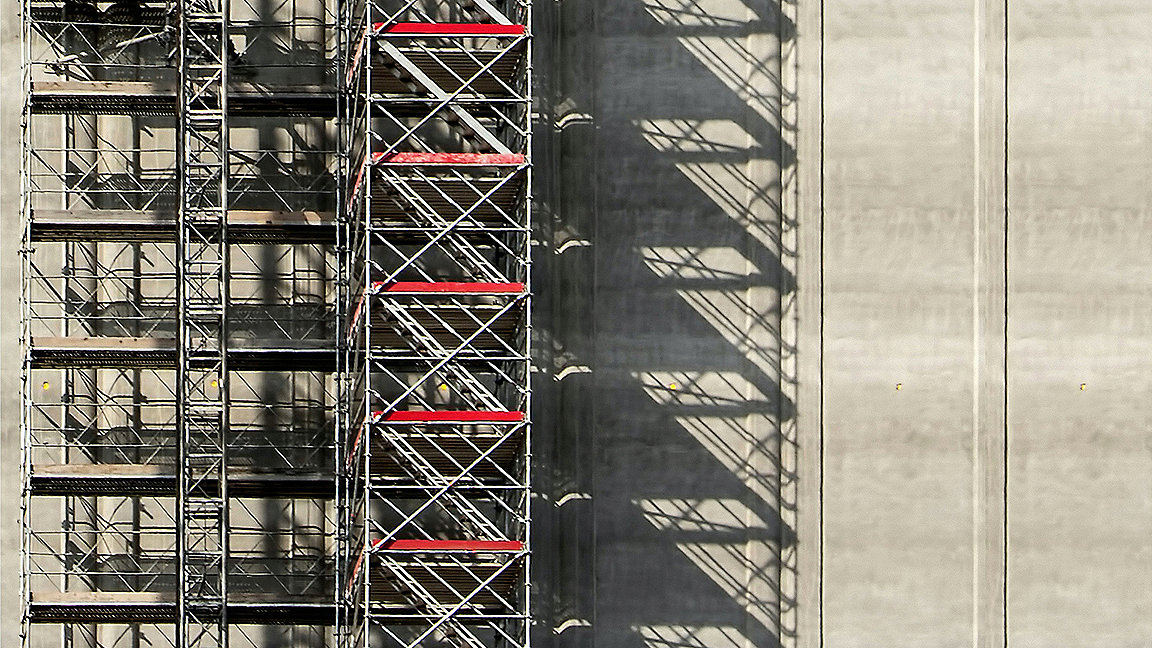
As COVID-19 restrictions ease around the world and the construction sector hopes to return to pre-pandemic levels of productivity, the cost of building materials is holding the industry back.
That’s the opinion of 91% of respondents to the latest RICS Global Construction Monitor, for Q1 2022. A further 71% say a shortage of materials is hindering construction activity, suggesting that the cost and availability of goods such as steel and lumber is a big problem across the sector.
The rising cost of building materials is not a new issue, but the scale of the problem has increased significantly over the past year. In the first quarter of 2021, 66% of respondents said the cost of materials was holding back construction and a year later that figure has risen 25%. Respondents citing a shortage of materials as an issue has also risen 24% in the last 12 months (from 47% in Q1 2021).
What is holding back global construction in 2022?
Material costs and shortages were the most common reason cited by RICS members for global construction being hampered, but labour and skills shortages weren’t far behind. Tarrant Parsons, senior economist at RICS, says demand for materials is outstripping supply. “The increase in material costs is stemming from a surge in demand, particularly across the infrastructure sector, following the pandemic,” says Parsons. “This is set against disrupted supply chains that have been hindered by COVID-19-related restrictions.
“More recently, sharply rising energy costs have directly fed into higher material costs given, for example, steel, cement and glass are all energy-intensive industries. The latest Global Construction Monitor shows these already prominent issues intensifying further, and it does not look like there will be much respite until well into next year.”
“Sharply rising energy costs have directly fed into higher material costs” Tarrant Parsons, RICS Senior Economist
What skills shortages are affecting the industry this year?
More than half of respondents (53%) say a shortage of quantity surveyors is one of the skills shortages affecting the construction industry this year. Only 38% of respondents believe there is currently a shortage of building surveyors.
“The shortage of quantity surveyors is a global issue and there might be several factors at play,” says Parsons. “An ageing working population is a problem across the construction industry in general. In particular, the quantity surveying profession seems to have an especially difficult time attracting enough young students to meet demand. This might be due to the complexity of the role.”
How do you expect your costs to change during the next 12 months?
Although 4% of RICS members expect the price of tenders to rise over the next year, this is set against a backdrop of more steeply rising costs. Foremost of those is the cost of materials, expected to raise by 9% – more than double the price of tenders. Construction costs are expected to rise by 8.2%, with only the cost of unskilled labour expected to rise at a similar level (4.5%).
How has construction activity changed compared to last quarter / this time last year?
The global average increase in construction activity compared to Q4 2021 is 20%, with the US experiencing a far above average increase of 52%. Of the five countries we have highlighted, Hong Kong is the only one showing a negative change – construction activity has decreased by 8% quarter-on-quarter there.
“Hong Kong (and mainland China) is experiencing arguably the worst period of the pandemic to date,” says Parsons. “While countries such as the UK have dropped all restrictions, China’s zero-COVID-19 approach means they are implementing tight lockdowns which inevitably cause significant disruption across the economy and the construction sector is being affected by this.”
“The quantity surveying profession seems to have an especially difficult time attracting enough young students to meet demand” Tarrant Parsons, RICS Senior Economist
How does your infrastructure workload compare to last quarter / this time last year?
RICS members say their infrastructure workload involving energy projects has increased the most since the final quarter of 2021 (up 35% globally) with information and communications technology (ICT) infrastructure only slightly behind (up 33%). Agribusiness is seeing the slowest growth at 10%.
In Hong Kong, where overall construction activity is down 8%, workloads involving agribusiness infrastructure is down 30% and all other infrastructure workloads are down to some extent. In the US, ICT infrastructure workloads are up 60% – its highest growth sector. In Australia, transport infrastructure is leading the way, increasing 58% since the previous quarter and in the UK, energy infrastructure workloads have increased 53%.


